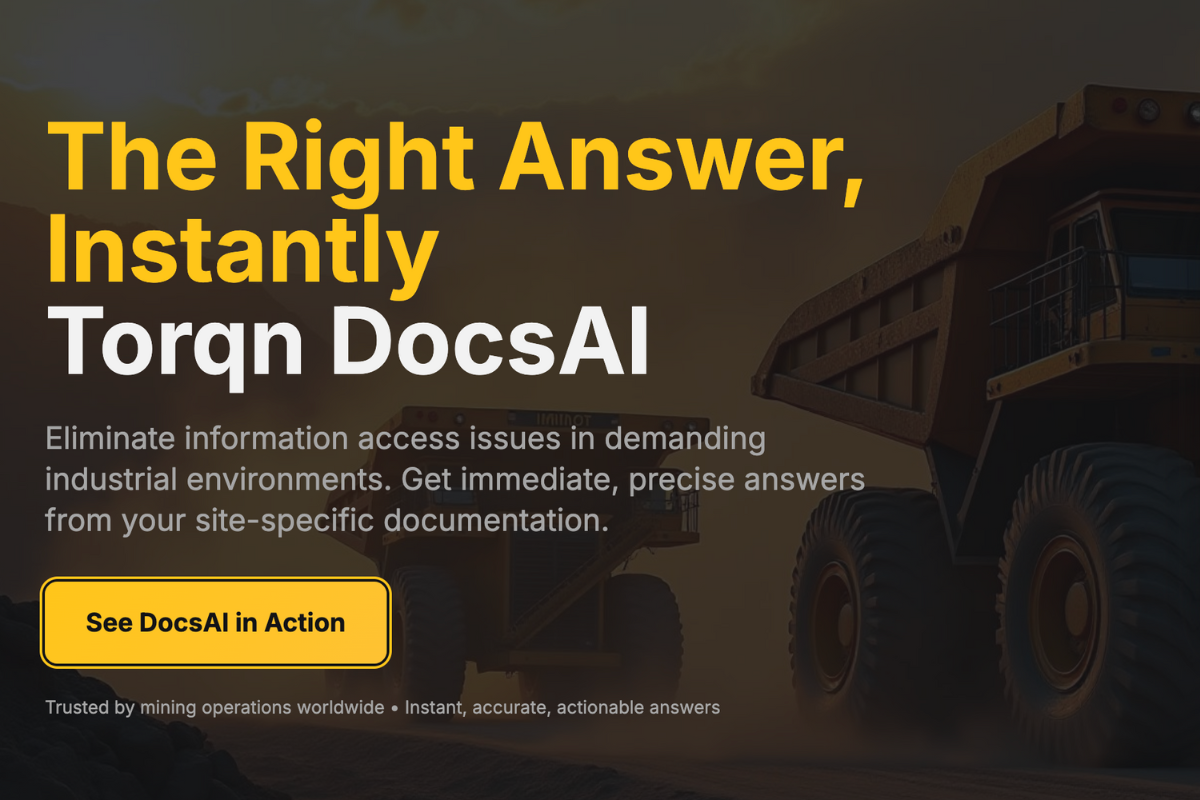Every mine site I’ve been on has cutting-edge gear… and a document system that feels like it’s from 1995. It’s costing companies millions - and no one’s talking about it.
Walk onto almost any mine site and you’ll see world-class engineering.
Autonomous haul trucks. Real-time sensor data. Predictive maintenance dashboards that can forecast a breakdown before it happens. But if you ask a tradesperson to find the procedure for isolating that same piece of equipment, the search begins.
The manuals might be in a binder on a dusty shelf - if they’re even there. Or maybe they’re hidden in a server folder with a 30-character name only one person remembers. Worse still a person is asked to isolate the equipment who only does that job once every three to four months, and has forgotten the critical steps.
That’s not efficiency.
That’s institutional friction.
How We Tried to Fix It Before
Years ago at BHP we built a system to solve this. It was called IPICK - a simple touchscreen kiosk in the muster room that let underground workers find management plans, standards, and procedures in just a few taps. It worked.
BHP later commercialised it. It only worked though because an army of people spent months tagging, categorising, and cross-linking every document. We had to imagine all the different ways someone might look for a file and build pathways for each.
Over time, that maintenance stopped.
People moved on, budgets shifted, and the system lost its edge.
The root problem remained: access to information depends on how well it’s organised - and that takes constant effort.
The New Reality
Fast-forward to 2025. Artificial intelligence has changed how we can search and understand information, yet most frontline workers still don’t have access to tools that make it easier.
That’s where DocsAI, part of the TORQN suite, comes in.
DocsAI uses retrieval-augmented generation to read every document in your library - procedures, management plans, standards, training material - and build its own understanding of the content.
When you ask a question in plain English, DocsAI finds the relevant information, shows the answer, and links you straight to the source document for verification.
You don’t need perfect naming conventions. You don’t need metadata. You don’t even need to know where something’s stored.
It turns every employee into an instant expert on company procedures.

The Hidden Cost DocsAI Eliminates
In the past few months, we’ve spoken with multiple site coordinators and engineers who admit they spend one to two hours every day just helping others find information.
Highly qualified professionals - people whose time should be focused on risk management, planning and defect elimination - end up doing the job of an administrator.
That’s millions of dollars in wasted labour across the industry, plus the opportunity cost of distracted expertise and the frustration that comes with it.
With DocsAI, the operator or tradesperson can simply ask:
“What’s the spacing for stone-dust bat bags in a five-metre roadway?”
“What’s the rule for taking a continuous miner into a borehole precautionary zone?”
Seconds later, they get the answer and the link to the exact page in the standard.
Verified. Instant.
The Result
DocsAI doesn’t replace human judgment - it gives it more time to do what matters.
It removes friction, frees up qualified minds, and turns site knowledge into a living resource.
Access to information is no longer a barrier. It’s an advantage.
Question for you:How much time do people on your site spend just looking for information every day?






.png)


